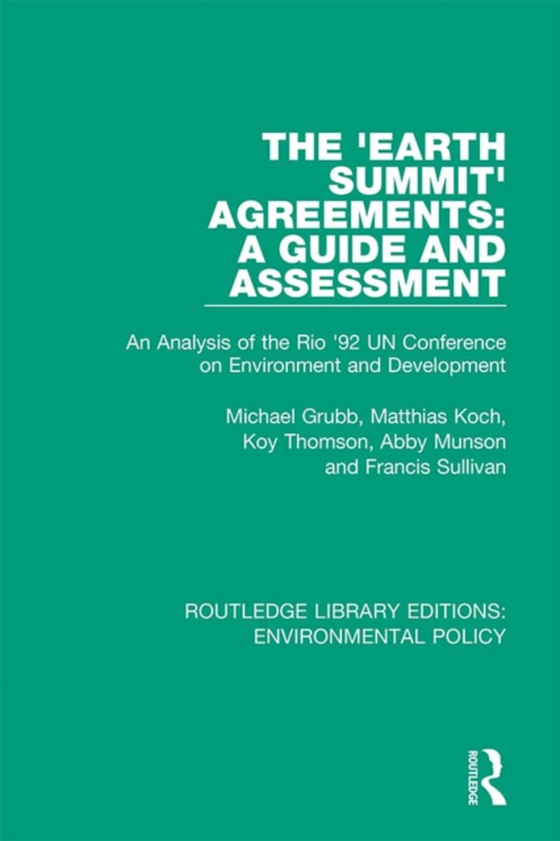
'Earth Summit' Agreements: A Guide and Assessment e-bog
273,24 DKK
(inkl. moms 341,55 DKK)
First published in 1993. The United Nations Conference on Environment and Development (UNCED) in Rio de Janeiro, in June 1992, was a unique event in the annals of international affairs. The 'Earth Summit' brought more heads of state and government together than any previous meeting, and five separate agreements were signed by most of the participating governments. It was billed as the world's g...
E-bog
273,24 DKK
Forlag
Routledge
Udgivet
21 marts 2019
Længde
198 sider
Genrer
JPSN1
Sprog
English
Format
epub
Beskyttelse
LCP
ISBN
9781000007138
First published in 1993. The United Nations Conference on Environment and Development (UNCED) in Rio de Janeiro, in June 1992, was a unique event in the annals of international affairs. The 'Earth Summit' brought more heads of state and government together than any previous meeting, and five separate agreements were signed by most of the participating governments. It was billed as the world's greatest opportunity to resolve pressing problems of continuing poverty and environmental destruction and to set the world on a path of sustainable development. Thirty thousand people descended upon the city, and the Summit received a blaze of publicity around the world. Yet despite the vast efforts devoted to it, and the unprecedented press coverage which it received, to many the Earth Summit is still a mystery. The outcome has been labelled as everything from a disastrous fiasco to an outstanding success. Which was it; indeed, what was it? What came out of it? What was actually agreed, and what does it mean for the future of environment and development issues? This book presents a major summary and analysis of UNCED. It explains the background to the conference, its major achievements and disappointments, and the legacy which it has left. Individual chapters examine in detail each of the five main agreements signed at Rio, providing a short description of the negotiating background, analysis of the final text, and the likely implications. This title will be of great interest to students of environmental studies.
 Dansk
Dansk

